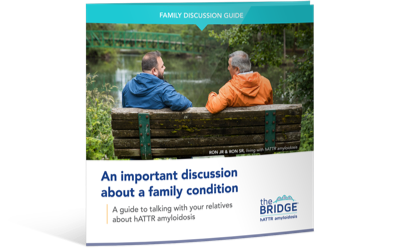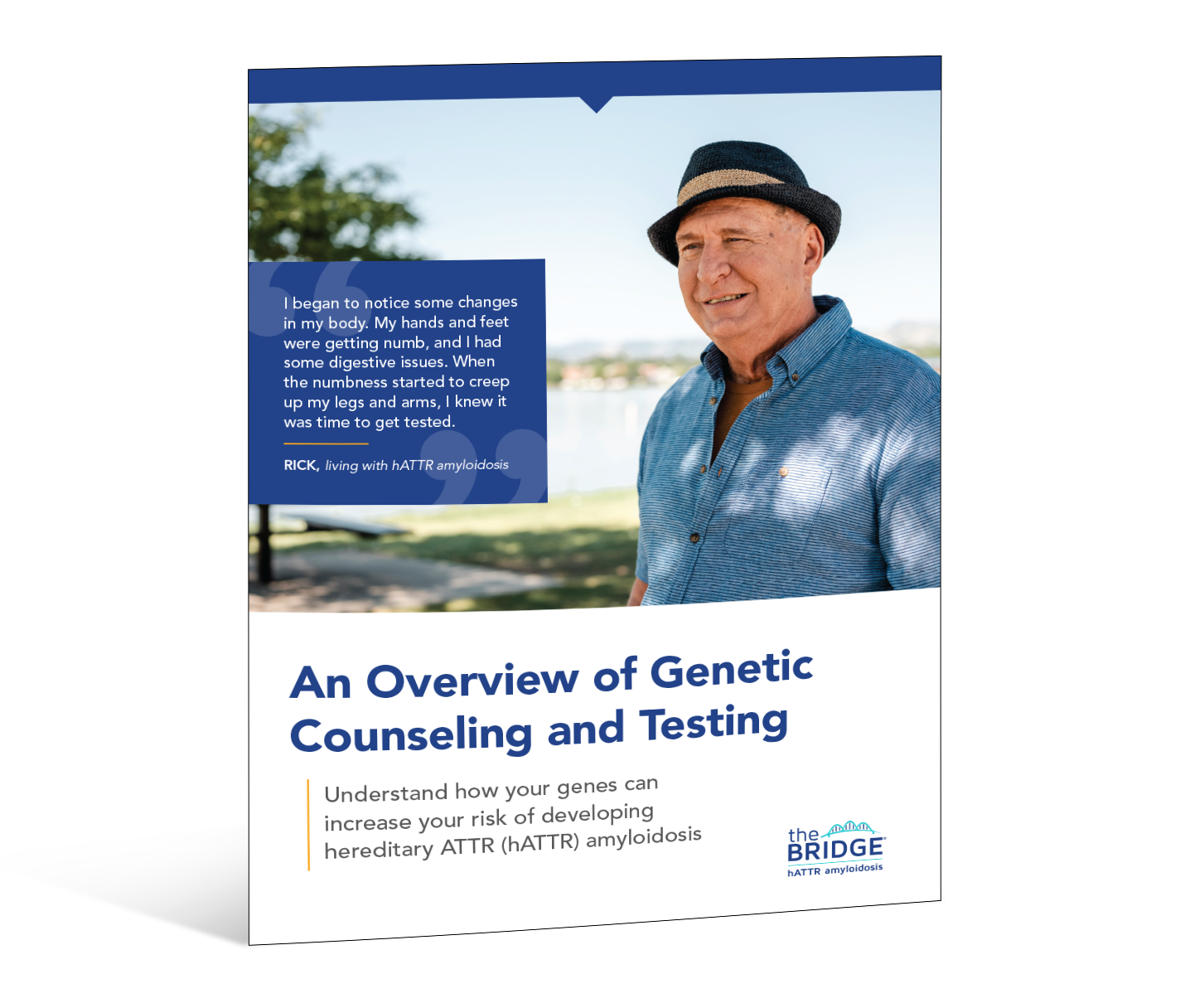Talking with your relatives about an hATTR amyloidosis diagnosis
By educating your family about hereditary ATTR (hATTR) amyloidosis, you are helping to strengthen the support network around you and are empowering your family to make informed, health-conscious decisions about their future.
First steps to starting a family conversation
After diagnosis, there are going to be times that you may need help from loved ones. The following steps can help you start a conversation and educate your loved ones about hATTR amyloidosis:
Arm yourself with facts
- Your family will probably have questions about this rare genetic condition. Knowing the basic facts can help you take the first steps to starting the conversation with your family
Explain that hATTR amyloidosis is hereditary
- Highlighting the hereditary nature of the condition can help your family understand their risk for hATTR amyloidosis and why your condition may directly affect them
Describe the variability in symptoms
- Help your family understand that hATTR amyloidosis can affect several parts of the body, including the nerves, heart, and digestive system. Symptoms may vary widely from patient to patient, even among individuals in the same family, though some patients do experience a similar pattern of symptoms within their families
Explain that misdiagnosis is common
- hATTR amyloidosis symptoms are similar to those of other conditions. Knowing what to look for can help family members work with their doctors to reach an accurate diagnosis
Encourage communication
- Urge your family members to speak with their doctors about genetic counseling and testing. If you feel comfortable, you may want to share your own journey to diagnosis with them


"My family’s experiences with hATTR amyloidosis have taught me the importance of acquiring educational tools, empowering us all to advocate for one another’s health and life."
Empower your family members to take action
By encouraging your family to visit a doctor and genetic counselor, you can help them learn more about the condition. They may talk about their chances of inheriting the disease, how testing works, and what may happen after a diagnosis.
A genetic test can help your family determine whether or not they carry a variant in the TTR gene associated with hATTR amyloidosis and help them determine their own risk for the condition.
Hear about one family’s journey with hATTR amyloidosis




